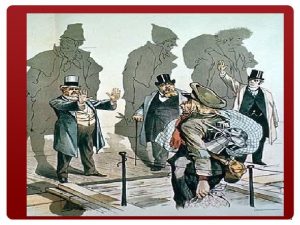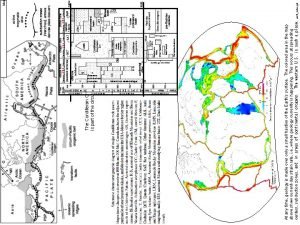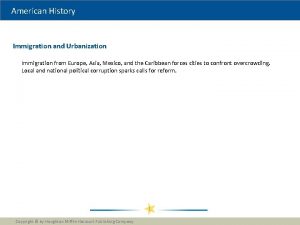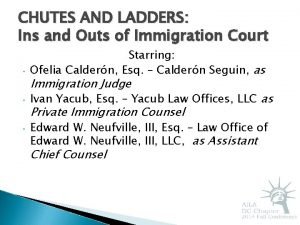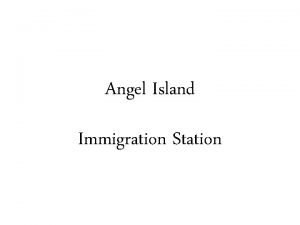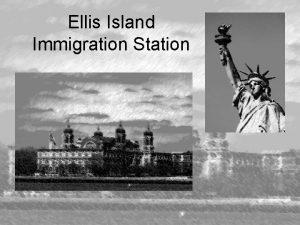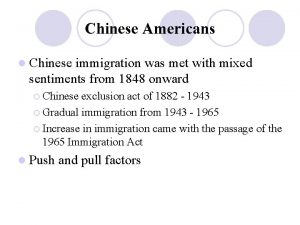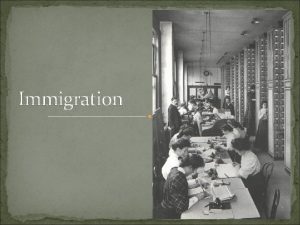ANGEL ISLAND CHINESE IMMIGRATION Angel Island n Angel





































- Slides: 37

ANGEL ISLAND CHINESE IMMIGRATION

Angel Island n Angel Island is the largest island in the San Francisco Bay. n It has a long history & has been used by the U. S. government for many different things.


Uses of Angel Island n During the Civil War, the U. S. government turned the island into a fort to defend San Francisco from a possible Confederacy attack. – But the attack never happened. n During the Spanish-American War (1898) it was used as a detention camp for captured prisoners.

During the World Wars During both World Wars, the island was used as a POW (Prisoner of War) camp. And during WWII it was also used as a processing center for the military.

Immigration Station But Angel Island is best known as the home of the Angel Island Immigration Station.


Angel Island Immigration Station n The Immigration Station operated from 1910 to 1940. n It was the main entry point into the U. S. for people arriving from the Pacific routes. – China, Japan, Korea n More than 1 million were the station. people processed at




Angel Island vs. Ellis Island Angel Island is often called the “Ellis Island of the West, ” but this is not accurate. n Major differences in the missions of the two immigrant stations. – Ellis Island welcomed immigrants into the U. S. and the vast majority of those arriving were process and “landed” immediately. – On Angel Island, many immigrants (mostly the Chinese) were NOT welcomed at all and were allowed in the country only after strife and struggle.

Immigrants leaving ship in harbor to go to Angel Island Immigration Station circa 1925

Life at the Immigration Station n Waiting immigrants were housed in barracks separated by sex. – Husbands and wives were not allowed to see one another. n Living conditions were harsh—crowded, unsanitary, etc.


n. Bunk beds stacked 3 high and 2 across n(70 -150 people per room). n. Bathrooms were open. n. There was little to no privacy!



Fears of Escape? ? n Detainees were held locked in the barracks for significant amounts of time because of Immigration Service fears that they would escape. – Women were allowed walks around the island once a week. – Men had to remain in the fenced yard— surrounded by barbed wire and armed guards posted in border towers who were ordered to shoot if there were any attempts of escape.






The Faces of Angel Island

Poetry on the Walls n In response to the conditions of their detentions, many detainees wrote poetry on the walls that spoke of their despair. – Much has been preserved, copied, and archived today.

Imprisoned in the wooden building day after day, My freedom is withheld; how can I bear to talk about it? I look to see who is happy but there only sit quietly. I am anxious and depressed and cannot fall asleep. The days are long and bottle constantly empty; My sad mood even so is in dispelled. Nights are long and the pillow cold; who can pity my loneliness? After experiencing such loneliness and sorrow, Why not just return home to learn to plow the fields? --author unknown, Poem 32

America has power, but not justice. In prison, we were victimized as if we were guilty. Given no opportunity to explain, it was really brutal. I bow my head in reflection but there is nothing I can do. --author unknown, poem number unknown

The Chinese immigrants, like their European counterparts, came to the U. S. in search of new lives and prosperity. Instead they were greeted with a detention center, interrogations, and uncertainty.

Other “Enemy Aliens” n Although Chinese people constituted a large number of total detainees on Angel Island, they were not the only groups held there. n Other Asians, South & Central Americans, Europeans, and Australians were all processed through the station. – Most never spent a night there. n Japanese picture brides also constituted a sizable group of the Pacific arrivals.


The Angel of Angel Island n Deaconess Katherine Maurer is known as the “Angel of Angel Island” n She was appointed in 1912 by the Women’s Home Missionary Society to do welfare work on behalf of the Angel Island detainees. – She gave English lessons, introduced people to the American culture, provided them with small items (towels, soap, toothbrushes/paste, combs, etc. ) and toys, books, crayons, etc. for the children.


The End of Angel Island Immigration Station n Complaints began to surface regarding the safety of the buildings of the Immigration Station—fears of fire, spreading disease, etc. – In the end, these fears proved true when the Administration Building burned to the ground in 1940. n Angel Island had now been declared a National Historic Landmark and money has been raised (and continues to be raised) for its restoration and preservation.

Aftermath of the electrical fire that closed the Administration Building. Detention barracks in background.

A Monument on the Island Dedicated in 1979 to all those immigrants who were detained at the immigration station. The inscription reads: Leaving their homes and villages, they crossed the ocean Only to endure confinement in these barracks; Conquering frontiers and barriers, they pioneered A new life by the Golden Gate.

 Chinese immigration to canada push and pull factors
Chinese immigration to canada push and pull factors Ellis island vs angel island
Ellis island vs angel island Ellis island and angel island venn diagram
Ellis island and angel island venn diagram Primary 3 malay worksheets
Primary 3 malay worksheets Angel island definition
Angel island definition Megway
Megway Angel island
Angel island What is an island
What is an island Island of the blue dolphins island map
Island of the blue dolphins island map Jennie ellis australia immigration
Jennie ellis australia immigration Difference between immigration and emigration
Difference between immigration and emigration Lca in immigration
Lca in immigration Immigration presentation ideas
Immigration presentation ideas Market revolution immigration
Market revolution immigration European immigration
European immigration Industry and immigration lesson 2
Industry and immigration lesson 2 Chapter 5 immigration and urbanization
Chapter 5 immigration and urbanization European immigration to texas
European immigration to texas Industrialization causes
Industrialization causes What is immigration
What is immigration European immigration
European immigration Transcontinent
Transcontinent Italian immigration to scotland
Italian immigration to scotland Immigration policies definition ap human geography
Immigration policies definition ap human geography This is why people migrate aj+
This is why people migrate aj+ Cabrini center for immigrant legal assistance
Cabrini center for immigrant legal assistance Immigration
Immigration Services
Services Chapter 7 building vocabulary immigration and urbanization
Chapter 7 building vocabulary immigration and urbanization Christina khan ucf
Christina khan ucf Ofelia calderon immigration lawyer
Ofelia calderon immigration lawyer How did esperanza help marta during an immigration sweep
How did esperanza help marta during an immigration sweep What is the immigration
What is the immigration Immigration definition biology
Immigration definition biology What is this
What is this Frank & delaney immigration law, llc
Frank & delaney immigration law, llc Http://teacher.scholastic.com/activities/immigration/tour/
Http://teacher.scholastic.com/activities/immigration/tour/ Immigration partnership winnipeg
Immigration partnership winnipeg

